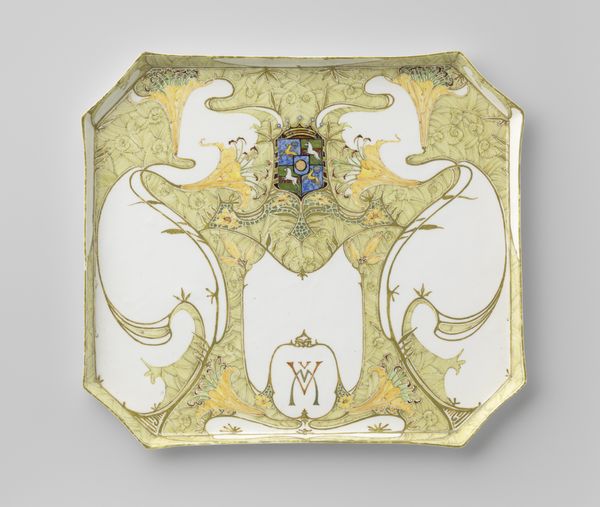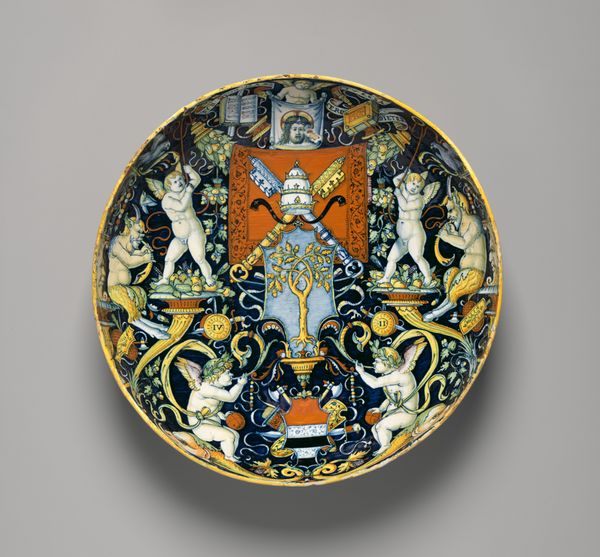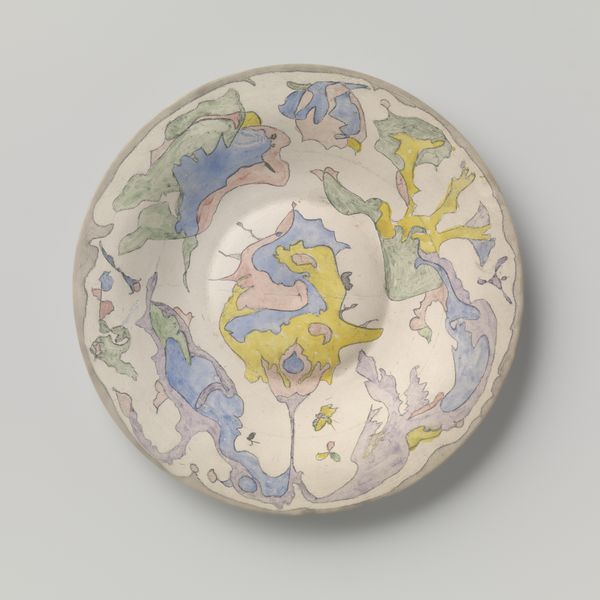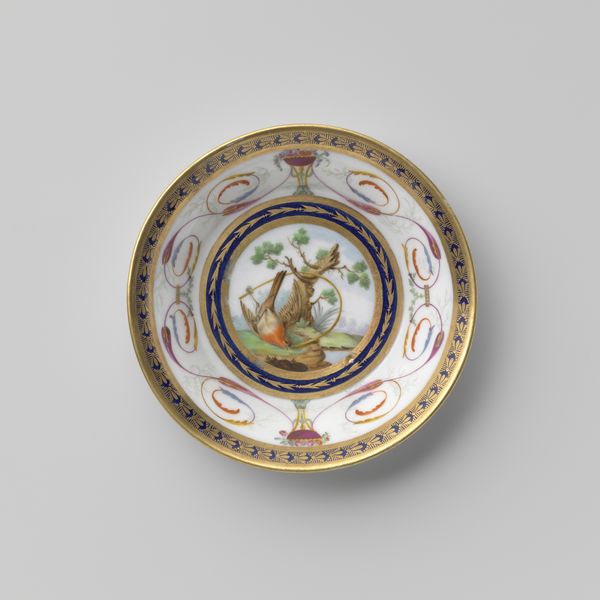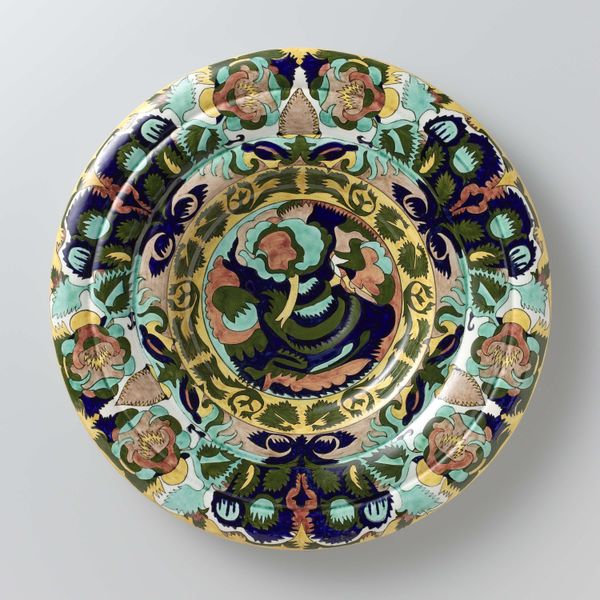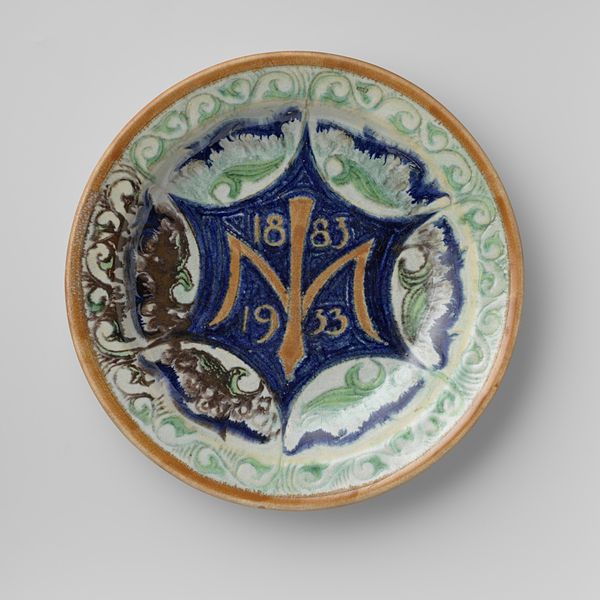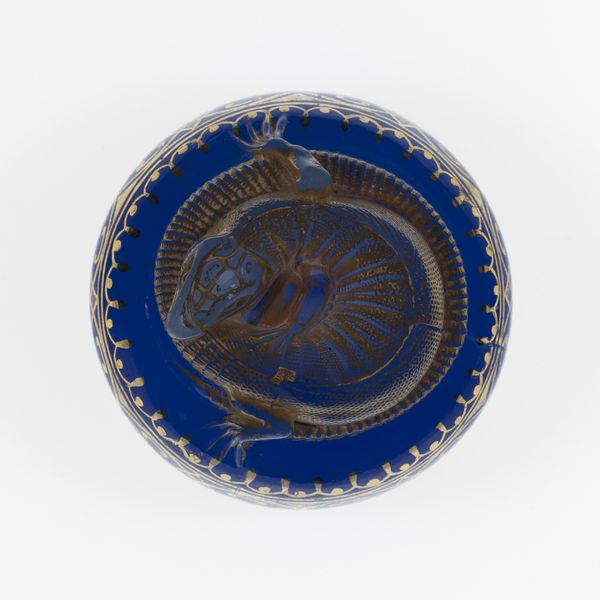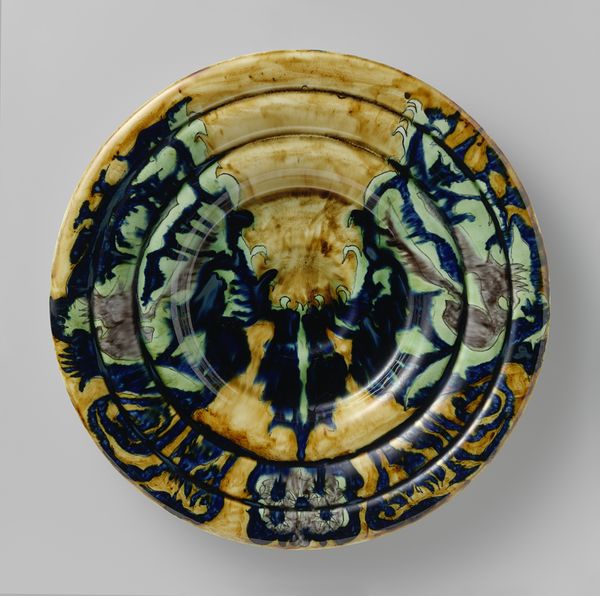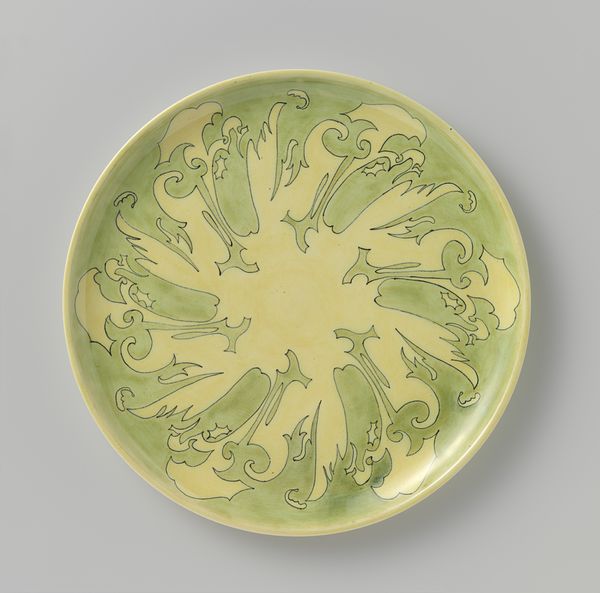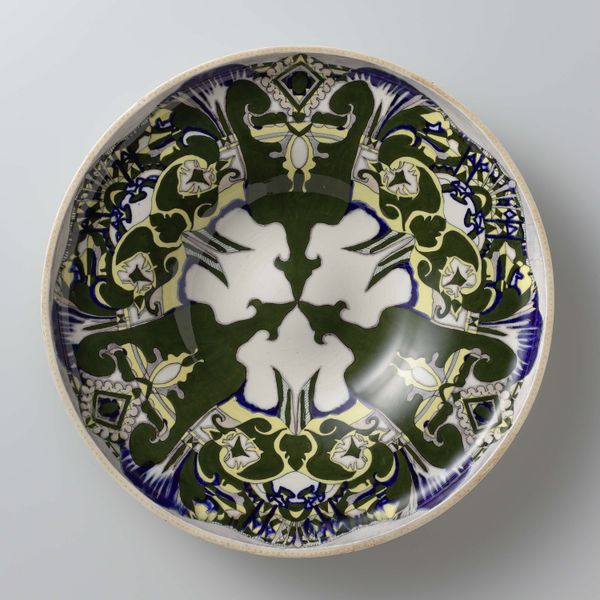
Schotel, deel van een tête-à-tête, beschilderd met lelies 1900
0:00
0:00
ceramic
#
art-nouveau
#
ceramic
#
geometric
#
ceramic
#
decorative-art
Dimensions: height 1.7 cm, diameter 12.2 cm
Copyright: Rijks Museum: Open Domain
Editor: This is a ceramic plate from around 1900 by N.V. Haagsche Plateelfabriek Rozenburg, titled "Schotel, deel van een tête-à-tête, beschilderd met lelies," which roughly translates to "Dish, part of a tea set, painted with lilies." The intricate Art Nouveau design really catches my eye. What can you tell me about it? Curator: Well, this plate speaks volumes about the era in which it was created. The Rozenburg factory was instrumental in the Dutch Art Nouveau movement, and this piece highlights how art was becoming increasingly integrated into everyday life, specifically luxury items marketed to an upwardly mobile middle class. Do you notice anything specific in its design? Editor: The shield in the middle feels...almost heraldic? Like it's referencing something important, some family or place. But it also feels kind of playful against the flowing lilies. Curator: Exactly! The shield is intentionally referencing traditional displays of power and status. Yet, by incorporating it into a decorative, mass-producible object like this plate, Rozenburg democratized these symbols, subtly undermining their exclusivity. It's an interesting interplay of tradition and modernity, don't you think? Editor: I do! So, this wasn’t just about making something beautiful, but about changing how people viewed status and art? Curator: Precisely. It's a fantastic example of how art enters the domestic sphere and renegotiates societal values, pushing back against older ideas about who could claim lineage and sophistication. It questions traditional power structures through aesthetic subversion. Editor: That’s a perspective I hadn't considered before. It adds so much depth to appreciating the beauty of this plate. Thanks! Curator: My pleasure. It's in considering how even decorative pieces can reflect cultural shifts that we start to truly understand their significance.
Comments
No comments
Be the first to comment and join the conversation on the ultimate creative platform.
